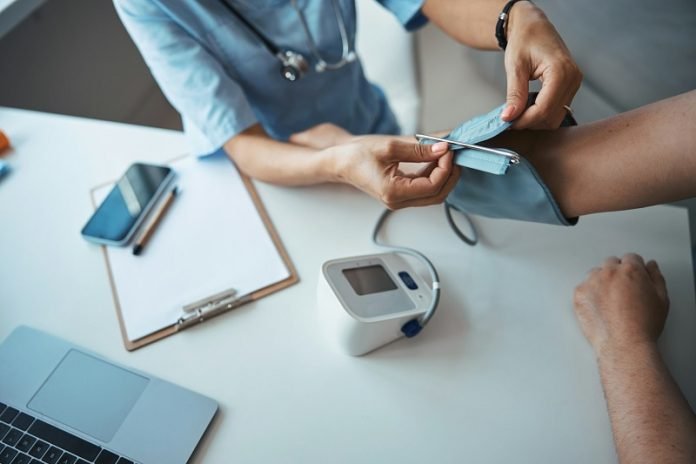
High blood pressure, or hypertension, is a common condition among the elderly that can lead to serious health problems if not managed properly.
Understanding the symptoms of high blood pressure in older adults is crucial for early detection and treatment, helping to prevent complications such as heart disease, stroke, and kidney damage.
One of the challenges with high blood pressure is that it often doesn’t cause noticeable symptoms, which is why it is sometimes called the “silent killer.”
Many people with high blood pressure may not realize they have it until it is measured during a routine doctor’s visit. However, some signs and symptoms can indicate high blood pressure, particularly in the elderly.
Headaches are a common symptom associated with high blood pressure, especially when it is severe or occurs suddenly.
Research indicates that while not everyone with high blood pressure experiences headaches, those who do may have them frequently, and the pain is often felt at the back of the head or neck. These headaches can be persistent and severe, warranting medical attention.
Another symptom that may be linked to high blood pressure is dizziness or feeling lightheaded. Older adults might experience episodes of dizziness, especially when standing up quickly from a sitting or lying position.
This can be due to a sudden drop in blood pressure upon standing, known as orthostatic hypotension, which is more common in people with hypertension. Studies suggest that monitoring blood pressure regularly can help identify and manage this symptom effectively.
Vision problems, such as blurred vision or seeing spots, can also be a sign of high blood pressure in the elderly. High blood pressure can damage the blood vessels in the eyes, leading to a condition called hypertensive retinopathy.
This condition can cause changes in vision and, if left untreated, may lead to more serious eye problems. Regular eye exams are important for detecting early signs of damage.
Shortness of breath is another symptom that can occur with high blood pressure. When the heart has to work harder to pump blood against high pressure, it can lead to fluid buildup in the lungs, causing difficulty breathing.
Older adults with high blood pressure may notice that they get winded more easily, even with minimal physical activity. This symptom can be particularly concerning and should be evaluated by a healthcare provider promptly.
Nosebleeds, although less common, can also be a symptom of high blood pressure. Sudden, frequent, or severe nosebleeds might indicate that the blood pressure is very high.
While nosebleeds can have various causes, it’s important for older adults who experience them regularly to check their blood pressure and seek medical advice.
Fatigue and confusion are symptoms that can be associated with high blood pressure, particularly in the elderly. The heart and brain may not receive enough blood and oxygen if the blood pressure is very high, leading to feelings of tiredness, weakness, and cognitive difficulties.
Older adults may find it harder to concentrate or may feel unusually tired, which can affect their daily activities and overall quality of life.
Chest pain or a feeling of pressure in the chest is a more serious symptom that can indicate high blood pressure is affecting the heart. This can be a sign of angina or even a heart attack. Any chest pain should be taken seriously and evaluated by a healthcare professional immediately.
Swelling in the legs, ankles, or feet, known as edema, can also be a symptom of high blood pressure.
When the heart is struggling to pump blood effectively, fluid can accumulate in the lower extremities. This swelling can cause discomfort and mobility issues, particularly for older adults.
In summary, high blood pressure in the elderly can present with a range of symptoms, including headaches, dizziness, vision problems, shortness of breath, nosebleeds, fatigue, confusion, chest pain, and swelling.
Recognizing these symptoms is important for early detection and management of high blood pressure, helping to prevent more serious complications.
Regular check-ups and blood pressure monitoring are crucial, as many people with high blood pressure may not experience noticeable symptoms.
By staying vigilant and seeking medical advice when symptoms occur, older adults can manage their blood pressure more effectively and maintain better overall health.
If you care about high blood pressure, please read studies that early time-restricted eating could help improve blood pressure, and natural coconut sugar could help reduce blood pressure and artery stiffness.
For more information about blood pressure, please see recent studies about added sugar in your diet linked to higher blood pressure, and results showing vitamin D could improve blood pressure in people with diabetes.
Copyright © 2024 Knowridge Science Report. All rights reserved.



